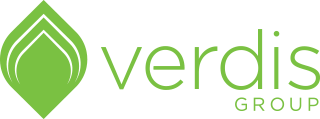Using Behavior Change Strategies to Encourage Cardboard Recycling in Lincoln

How do you get 280,000 people to start recycling cardboard?
This was the challenge with which we began in the summer of 2017 as we joined marketing firm Carson+Co Global on a city-wide project to prepare residents and businesses for an upcoming ordinance that would ban cardboard from the landfill. The ordinance was the result of multi-year process to address Lincoln’s low recycling rates. Cardboard was the single largest percentage of recyclable material found in audits of the landfill, making up 9.5% of the total. It is also a high-value item in the recycling market. Banning cardboard from the landfill should result in increased recycling rates not only of cardboard, but of other materials as well.
The campaign we designed, called “Take it to the Bin,” uses dozens of strategies to reach both the residential and commercial sectors in Lincoln. It launched in January of this year and will continue for two more years.
This week, the ordinance went into effect and so far all the signs are positive: observations at the landfill showed that garbage loads contained an average of only 5% cardboard! While it’s still early, now is a good time to reflect on how we did it.
Community-Based Social Marketing
Community-Based Social Marketing (CBSM) is a relatively new field that has gained prominence in the sustainability world as a tool to encourage people to adopt environmentally friendly behaviors. It combines the tools of social science with environmental impact analysis to bring about the desired behavior change.
We’ve been using CBSM for years here at Verdis Group, but recently I completed a one-year Certificate in Sustainability and Behavior Change from the University of California, San Diego and so was thrilled when our team got the contract to create a three-year education and behavior change initiative for the entire City of Lincoln.
The goal of the project was to persuade residents and businesses to start recycling cardboard in advance of the April 1, 2018 effective date of the ordinance. Working closely with Carson+Co Global, we took the following steps to design a comprehensive behavior change campaign:
- We gathered baseline data. We needed to know what current recycling rates were, how those numbers were calculated, what the sources of data are and how frequently they are updated.
- We conducted barrier and benefit research. For those who don’t currently recycle, we needed to know what barriers stood in their way. And for those who do, we needed to know what benefits they perceived in doing it. The answers to these questions, which we gathered through in-person interviews and focus groups, gave us key information about the barriers we needed to help people overcome. It also told us about the motivations that current recyclers have that could encourage non-recyclers to start.
- We selected specific CBSM tools that would reduce barriers and increase motivation. The tools are techniques that have been shown to influence behavior in social psychological research. They include things like holding up role models for others to follow; creating a norm that people will not want to be left out of; making the behavior convenient; prompting the behavior at the right time; and many other tools.
- We designed and implemented behavior change strategies. These strategies used the tools in specific, strategic ways to encourage people to start recycling.
Some examples of the strategies we developed are these:
- TV advertisements that show a typical Lincoln resident recycling cardboard (social modeling).
- Post-it tags that garbage haulers can leave on their customers’ garbage toters to remind them that cardboard isn’t garbage (prompts).
- Home-improvement retailers putting out displays of recycling bins in prominent locations around the time of the cardboard ban effective date (convenience).
- A business recognition program that lifts up businesses who recycle a majority of their waste streams and gives them free publicity (social modeling and incentives).
- Promoting a grant program that provides businesses with a rebate for their costs of implementing a recycling program (addressing the cost barrier).
- … and about 20 additional strategies that were deployed in a variety of methods.
This project has been a big challenge and also a lot of fun. We are thrilled to see positive results so far, and we look forward to continuing our work with the City of Lincoln to increase recycling rates!
If you are interested in learning about how we could implement a behavior change project at your organization, please contact me at kim@verdisgroup.com or at 402-405-9425.
To learn more about the Take it to the Bin campaign, see the Lincoln Recycling Web Page.
